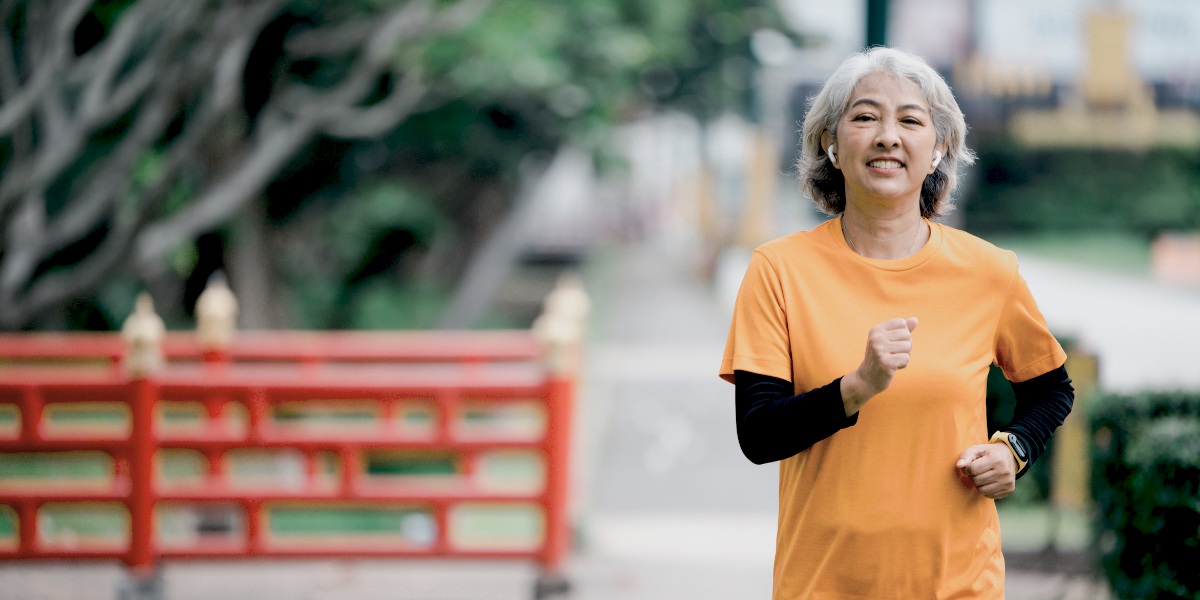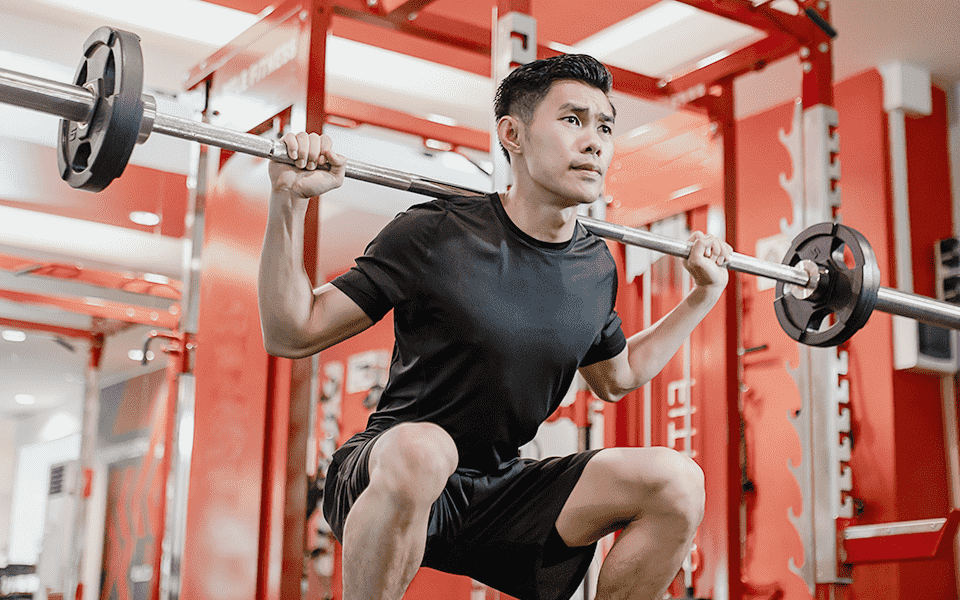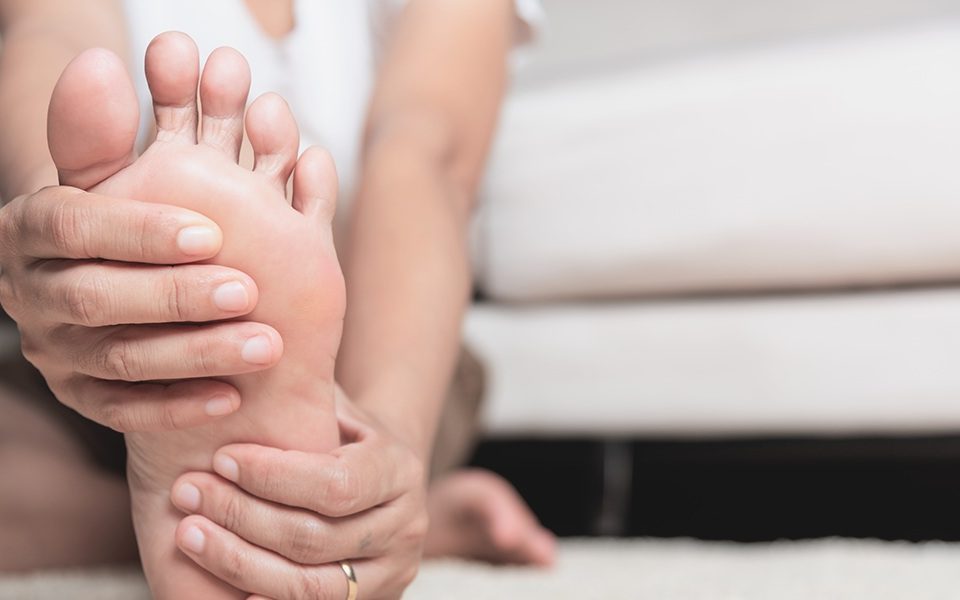Arthritis Causes and Treatments
by: Amanda Chua, TCM Physician, Regis Wellness
Last updated: November 29, 2025
Arthritis is one of the most common chronic illnesses in Singapore. Typically associated with ageing, the most common type of arthritis, osteoarthritis, affects 1 in 10 Singaporean adults and 1 in 5 elderly Singaporeans.
Furthermore, the 2007 National Health Surveillance Survey conducted by the Ministry of Health highlighted that the number of young Singaporean adults suffering from arthritis has increased. 23.7% of Singaporean adults between the age of 18 and 50 experience arthritis or related chronic joint problems.

Manage your arthritis pain at Regis Wellness
High quality, effective, holistic treatments
What is Arthritis?
Arthritis refers to the inflammation of our joints that often involves pain and swelling. Arthritis can affect small joints such as the ones in our fingers and feet, and large joints such as our knees and elbows. Arthritis can lead to the stiffening of the joints and deformities in the joints, resulting in decreased mobility, or in worse cases, disability.
Arthritis can affect your daily lifestyle and routine, as you may experience chronic pain when carrying out physical activities. The chronic pain comes and goes without warning, and this can be very inconvenient and frustrating to deal with.
Types of Arthritis
Arthritis is an umbrella term that has been used to describe a range of conditions affecting the joints, the tissues surrounding the joints as well as the other connective tissues in our bodies. Arthritis can be split into two main categories: Osteoarthritis and Inflammatory arthritis.
Osteoarthritis
Osteoarthritis, the most common form of arthritis, is a degenerative disease that gradually worsens over time if left untreated. While osteoarthritis usually affects older people, mainly those above the age of 50, it can happen at any age.
Osteoarthritis happens when the cartilage at the end of the bones wears down, leading to the bones rubbing against each other at the joint. This usually happens as we grow older, due to the usage of the joints, but can be accelerated by other factors such as sports injuries.
Osteoarthritis can damage the joints, resulting in pain and stiffness. While osteoarthritis cannot be cured and the damage to the joints cannot be reversed, the progression of osteoarthritis can be slowed down through treatment and management.
Possible Signs of Osteoarthritis
Early symptoms of osteoarthritis include:
- Experiencing sporadic pain when conducting strenuous physical activities
- Morning stiffness
- Stiffness after a period of inactivity
Inflammatory arthritis
Inflammatory arthritis is a result of an overactive immune system, with symptoms such as joint pain and stiffness. Inflammation arthritis, unlike osteoarthritis, can also affect your organs and tissues, such as the lungs, heart, and eyes. These are a few common types of inflammatory arthritis:
- Rheumatoid arthritis
- Psoriatic arthritis
- Juvenile idiopathic arthritis
- Gout
The most common form of inflammatory arthritis. While rheumatoid arthritis is a joint disease, it is also considered an autoimmune disease since it affects the rest of the body due to a malfunctioning immune system that attacks the tissues in the body. The main symptom of rheumatoid arthritis is the inflammation of joints in the body, which can be identified by swelling, redness, and warmth, causing pain and stiffness.
Psoriatic arthritis is a type of arthritis that develops in some patients with the skin disease psoriasis. Affected joints become swollen, stiff, and painful as a result. Around 1 in 3 psoriasis patients develop psoriatic arthritis. The severity of the condition can differ, but psoriatic arthritis, just like psoriasis, tends to worsen as time goes by with a risk of permanent damage to the joints.
Juvenile idiopathic arthritis is the most common type of arthritis for children under 16. While most people associate arthritis with a disease that typically develops when approaching old age, children can get arthritis as well. Juvenile idiopathic arthritis, along with the common symptoms of arthritis, can lead to very serious complications such as eye problems and growth problems.
Gout occurs as a result of excess uric acid in the blood. Uric acid is created by the body when purine, a substance found in food, is digested and broken down. Gout typically affects males more than females and is partly genetic. If you have a relative who suffers from gout, it may be passed on to you. The main symptom of gout is a pain in the joint of the big toe, which can later appear in other joints.
Possible Signs of Inflammatory arthritis
- Experiencing pain, swelling and stiffness in one or many joints
- Morning stiffness in and around the joint areas lasting for an hour or more
- Pain and stiffness that intensifies with inactivity and lessens after physical activity
- Reduced range of motion
- Fever, weight loss, fatigue
Common Risk Factors of Arthritis
- Obesity. Obesity results in more stress placed on the lower joints, such as the knees and ankles which can contribute to the development of osteoarthritis.
- Injury. Previous injuries such as bone fractures would put patients at higher risk of developing osteoarthritis later in life.
- Sedentary lifestyle. A sedentary lifestyle could be a contributing factor to arthritis since it results in weaker muscles supporting the joints leading to more stress placed on these joints. Sedentary lifestyles are especially prevalent in Singapore, due to the rising popularity of working from home as well as popular pastimes such as binge-watching Netflix series and other forms of entertainment.
- Age. The risk of developing arthritis increases with age, with those aged above 50 being most at risk in Singapore.
- Genetics. Studies have shown that those with family members suffering from arthritis have a higher chance of developing arthritis.
Diagnosing Arthritis
If you experience any symptoms or early signs of arthritis and suspect that you may have arthritis, do visit a doctor to get your condition diagnosed. Early diagnosis of arthritis is crucial in preventing permanent damage to the joints and avoiding any complications that may come along with the disease. Our general practitioners can provide you with the following diagnostic tests:
- Laboratory Tests. The analysis of body fluids allows for an accurate diagnosis of the type of arthritis you may have. These fluids can include: blood, urine, and joint fluid.
- X-ray. X-rays can reveal cartilage loss, bone damage, and bone spurs. While X-rays may not show early arthritic damage, they are typically used to track the progression of the disease.
- Ultrasound. Ultrasound is used to create images of the condition near the affected joints, highlighting soft tissues, cartilage, and fluid-containing structures. Ultrasound also offers assistance as a guide for injections.
- Computerised Tomography (CT) scan. CT scanners take X-rays from many different angles to create cross-sectional views of internal structures by making use of the information gathered. CTs can thus offer a clear visualisation of both bone and the surrounding soft tissues.
- Magnetic Resonance Imaging (MRI). MRI makes use of radio waves and a strong magnetic field to create detailed imaging of internal structures such as the cartilage, ligaments, and tendons.
Arthritis Prevention
As a chronic illness, arthritis cannot be cured, only managed. Therefore, it is important that you know how you can prevent arthritis. Here are some ways in which you can lower your risks of developing arthritis:
- Weight Management. Being obese or overweight can put extra stress on your joints, especially those in the lower body, such as the knees and ankles. By managing your weight, you can effectively relieve a ton of stress from your knees. Studies have found that people with a high body weight are more likely to develop knee osteoarthritis.
- Exercise. Exercise is not only effective in helping you lose weight, which will in turn relieve stress from your knees, but also effective in strengthening the muscles around the joints, as well as improving joint flexibility. This helps to stabilise the joints and protect them from wear and tear. Joint injuries are the most common cause of osteoarthritis and exercise can help to prevent this.
Experts recommend 30 minutes of moderate-intensity exercise five times a week. This can involve walking, doing sports, or doing chores. Consistent exercise will eventually bring about results. Muscle-strengthening, or flexibility exercises such as stretching, yoga or Pilates can be considered. - Avoiding Sports Injuries. Joint injuries are a high-risk factor for developing arthritis. It is important to protect yourself by preventing such injuries when doing sports. Proper warmups and stretching should be carried out before playing sports. The use of the correct safety equipment is also important should the sport demand it. Proper footwear with sufficient cushioning should be used as much as possible so as to provide shock absorption and stability. Cooling down after playing sports is effective in preventing injuries as well and should be carried out when possible.
- Quit Smoking. Smoking has been linked to a variety of health problems and complications, and studies have found a link between smoking and rheumatoid arthritis. Smoking promotes inflammation throughout the body, and this has been suggested to increase the risk of developing rheumatoid arthritis, a type of inflammatory disease.
- Controlling Your Blood Sugar. Studies have suggested a close association between diabetes and arthritis, where people with diabetes are more prone to developing arthritis and vice versa. The two chronic illnesses share similar risk factors such as obesity, sedimentary lifestyles, and age. High-blood sugar promotes inflammation in the body that could affect the joints causing arthritis to develop. Therefore, it is important to keep your blood sugar in check in order to prevent the development of arthritis.
Arthritis Treatment
Arthritis is a chronic condition that cannot be cured. However, with early treatment, symptoms can be controlled and damage to the joints can be prevented. Arthritis pain management is an important part of treatment. Treatment methods may depend on the type of arthritis as well as the severity.
Nonsteroidal anti-inflammatory drugs (NSAID)
NSAIDs help to reduce pain and inflammation.
Steroids
Corticosteroid medication helps to reduce pain and inflammation, as well as slow down damage to the joints. These may come in the form of oral medication or injections.
Counterirritants
These are effective in modulating pain signals from the joint which helps to lessen pain.
Disease-modifying antirheumatic drugs (DMARDs)
These drugs aim to slow down the progression of rheumatoid arthritis and avoid permanent damage to the joints and other tissues.
Surgery
Surgery may be recommended in cases where conservative measures are not effective:
- Joint repair
- Joint replacement
- Joint fusion
Physiotherapy for Arthritis
Physiotherapy plays a key role in managing arthritis by reducing pain, improving joint mobility, and strengthening the muscles that support affected joints. Using a combination of targeted exercises, hands-on techniques, and specialised therapies, physiotherapy helps individuals move more comfortably and maintain an active, independent lifestyle.
Arthritis management varies depending on the type and severity of the condition, but a tailored physiotherapy program can significantly improve daily function and reduce flare-ups. Treatment typically progresses through phases that address pain, mobility, strength, and long-term joint protection.
Physiotherapy for arthritis generally includes the following treatment focuses:
- Pain Relief & Joint Mobility Phase
- Hot and Cold Therapy to manage pain, reduce inflammation, and relieve stiffness in affected joints
- Ultrasound Therapy to reduce inflammation and improve circulation, helping ease pain and prepare joints for movement
- TENS Therapy to provide non-invasive pain relief by blocking pain signals and stimulating endorphin release
- Manual therapy techniques such as joint mobilisation and soft tissue mobilisation to improve mobility and reduce stiffness
- Gentle range of motion exercises to maintain flexibility and prevent further joint restriction
- Strengthening & Functional Support Phase
- Strengthening exercises to support weakened joints and improve overall stability
- Low-impact conditioning such as controlled movements that reduce stress on the joints while strengthening surrounding muscles
- Postural and movement training to improve joint alignment during daily activities
- Balance and proprioception exercises to reduce fall risk and enhance joint control
- Soft tissue techniques like deep tissue massage or myofascial release to relieve muscle tension caused by joint pain
- Long-Term Joint Protection & Lifestyle Management
- Functional strengthening to improve performance of everyday tasks such as climbing stairs, standing up, or walking
- Education on joint protection strategies to reduce strain on affected areas
- Activity modification guidance to help manage flare-ups and maintain activity levels safely
- Home exercise programs designed to support ongoing mobility and strength outside of treatment sessions
- Where needed, guidance on assistive devices to improve comfort and reduce joint stress
Our physiotherapist will monitor your progress throughout each phase, adjusting your plan based on your symptoms, mobility, and goals. With consistent physiotherapy, individuals with arthritis can enjoy reduced pain, improved joint function, and a better quality of life.
Disclaimer:
The information on this website, including but not limited to, text, graphics, images, videos and all other materials contained on this website is for informational purposes only. None of the material is meant to replace a certified and registered Doctor's professional medical advice, diagnosis, and treatment.
No warranties or representations are given in respect of the medical information. Regis Wellness, Regis Wellness’s staff, and the website's operator will not be held liable if a user suffers any injury or loss after relying upon the medical information on this website.
Any devices used for technology-enhanced therapies are intended for use only for general well-being purposes or to encourage or maintain a healthy lifestyle and is not intended to be used for any medical purpose (such as the detection. diagnosis, monitoring, management or treatment of any medical condition or disease). Any health-related information provided by this device or software should not be treated as medical advice. Please consult a certified and registered Doctor for any medical advice required. As with all medical conditions, there are exceptions and nuances to individuals’ condition and treatment modalities. We aim to provide only a general understanding for each section.
“Arthritis Comorbidities.” Centers for Disease Control and Prevention, Centers for Disease Control and Prevention, 17 May 2019, https://www.cdc.gov/arthritis/data_statistics/comorbidities.htm.
“Arthritis.” Mayo Clinic, Mayo Foundation for Medical Education and Research, 15 Sept. 2021, https://www.mayoclinic.org/diseases-conditions/arthritis/diagnosis-treatment/drc-20350777.
Bykerk, Vivian P. “Living with Inflammatory Arthritis: What You Need to Know.” Living with Inflammatory Arthritis, Hospital for Special Surgery, 9 Feb. 2022, https://www.hss.edu/conditions_living-with-inflammatory-arthritis.asp
“Gout.” Gout: Definition, Causes, Symptoms, Statistics & Facts: HSS, Hospital for Special Surgery, https://www.hss.edu/condition-list_gout.asp.
Hu-Dan Pan, et al., “Traditional Chinese Medicine as a Treatment for Rheumatoid Arthritis: From Empirical Practice to Evidence-Based Therapy”, Engineering, Volume 5, Issue 5, 2019, Pages 895-906, ISSN 2095-8099, https://doi.org/10.1016/j.eng.2019.01.018.
Leython Williams, PT. “Why Should You Have Physical Therapy for Arthritis?” Arthritis, Arthritis-Health, https://www.arthritis-health.com/blog/why-should-you-have-physical-therapy-arthritis.
Nichols, Hannah. “What Are the Causes and Types of Arthritis?” Medical News Today, MediLexicon International, 14 Nov. 2017, https://www.medicalnewstoday.com/articles/7621#_noHeaderPrefixedContent.
“Physical Therapy for Arthritis.” Physical Therapy for Arthritis, Arthritis Foundation, https://www.arthritis.org/health-wellness/treatment/complementary-therapies/physical-therapies/physical-therapy-for-arthritis.
“Rheumatoid Arthritis”, Hospital for Special Surgery, https://www.hss.edu/condition-list_rheumatoid-arthritis.asp.
Selfe, Terry Kit, and Ann Gill Taylor. “Acupuncture and osteoarthritis of the knee: a review of randomized, controlled trials.” Family & community health vol. 31,3 (2008): 247-54. doi:10.1097/01.FCH.0000324482.78577.0f
“Signs of Arthritis - Symptoms of Inflammatory Arthritis & Osteoarthritis.” Symptoms of Inflammatory Arthritis & Osteoarthritis, Arthritis Society, https://arthritis.ca/about-arthritis/signs-of-arthritis.
Sugiyama D, Nishimura K, Tamaki K, et al. “Impact of smoking as a risk factor for developing rheumatoid arthritis: a meta-analysis of observational studies.” Annals of the Rheumatic Diseases 2010;69:70-81.
Zheng H, Chen C. “Body mass index and risk of knee osteoarthritis: systematic review and meta-analysis of prospective studies” BMJ Open 2015;5:e007568. doi: 10.1136/bmjopen-2014-007568


